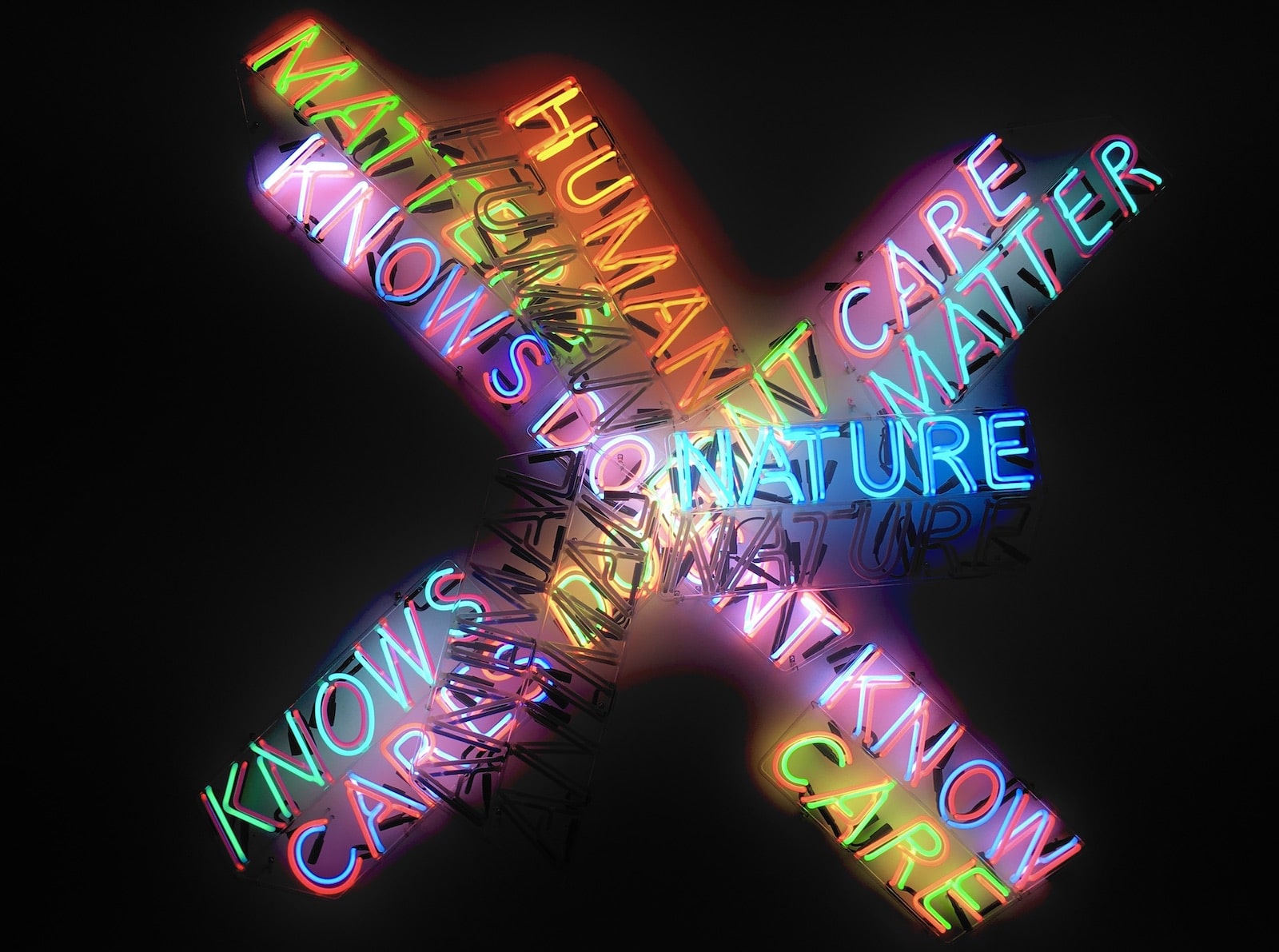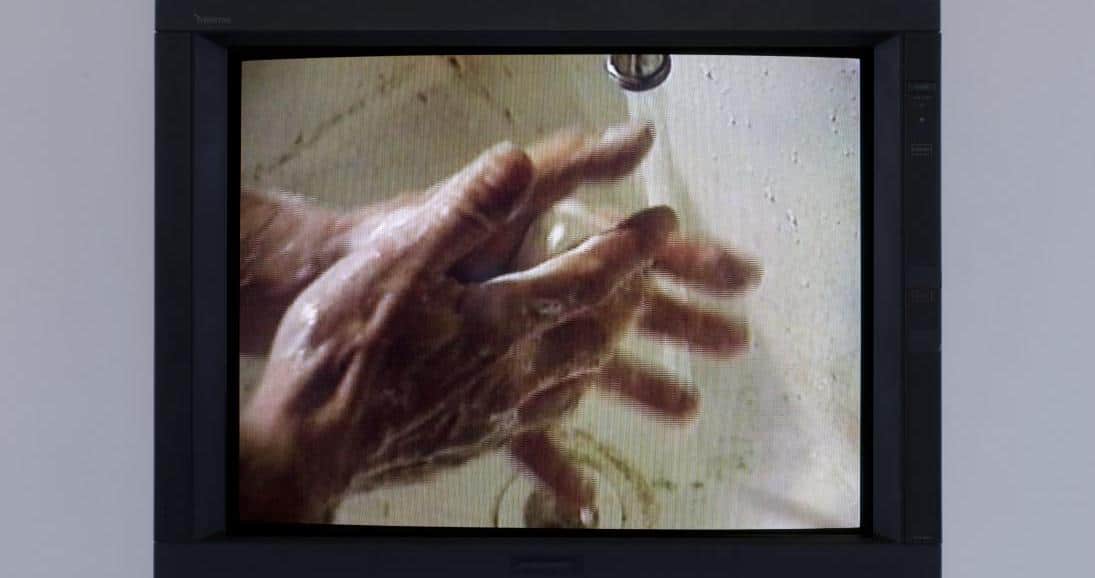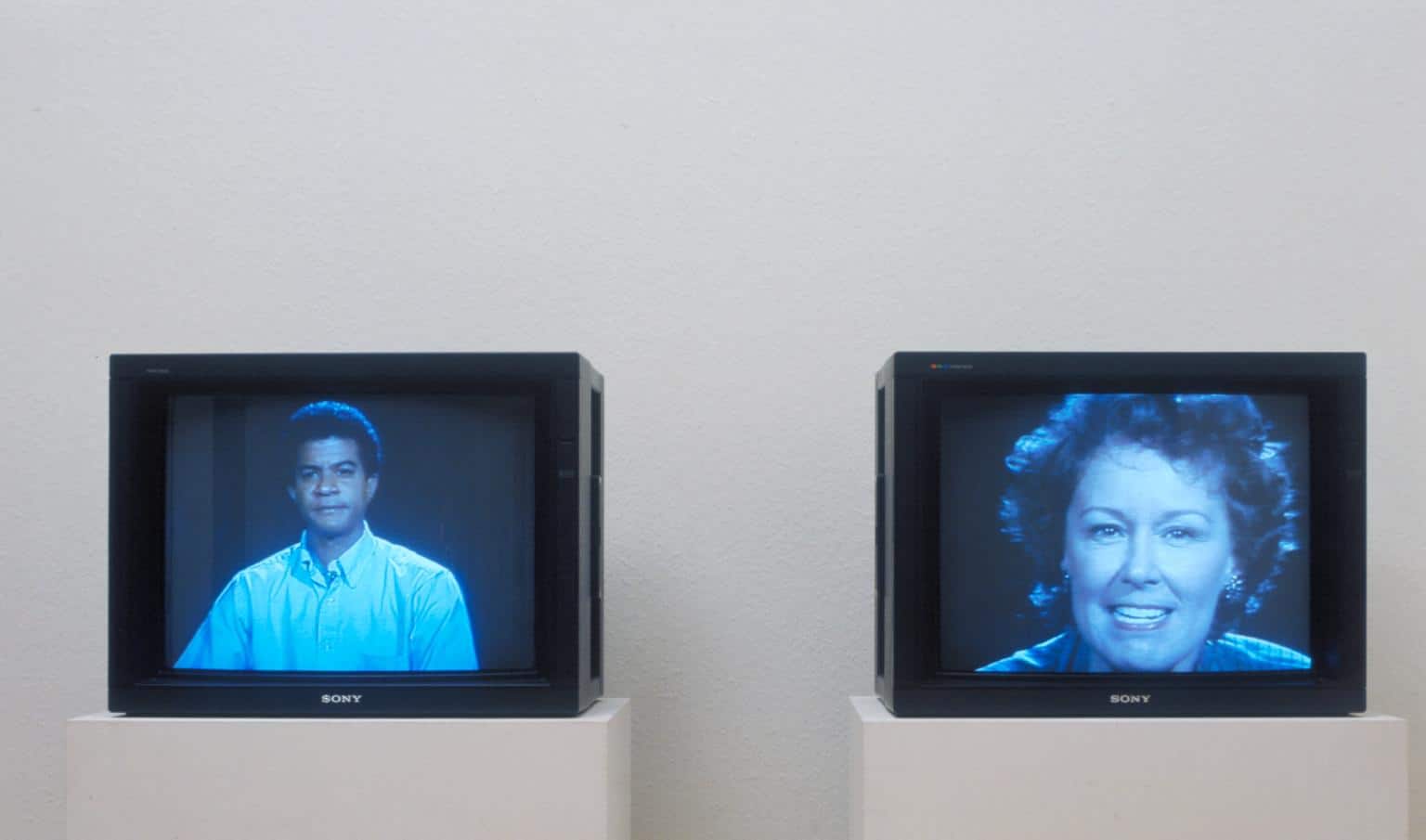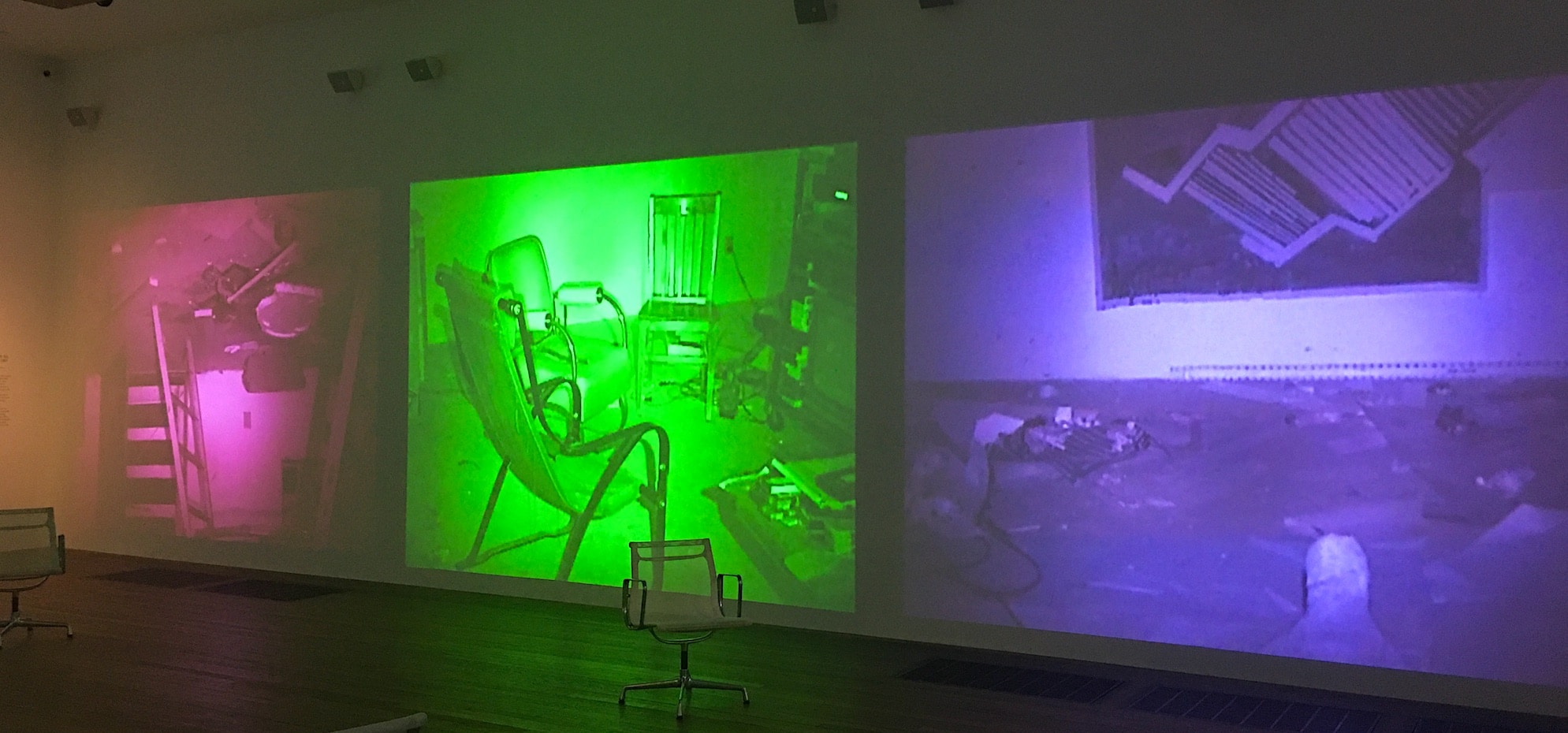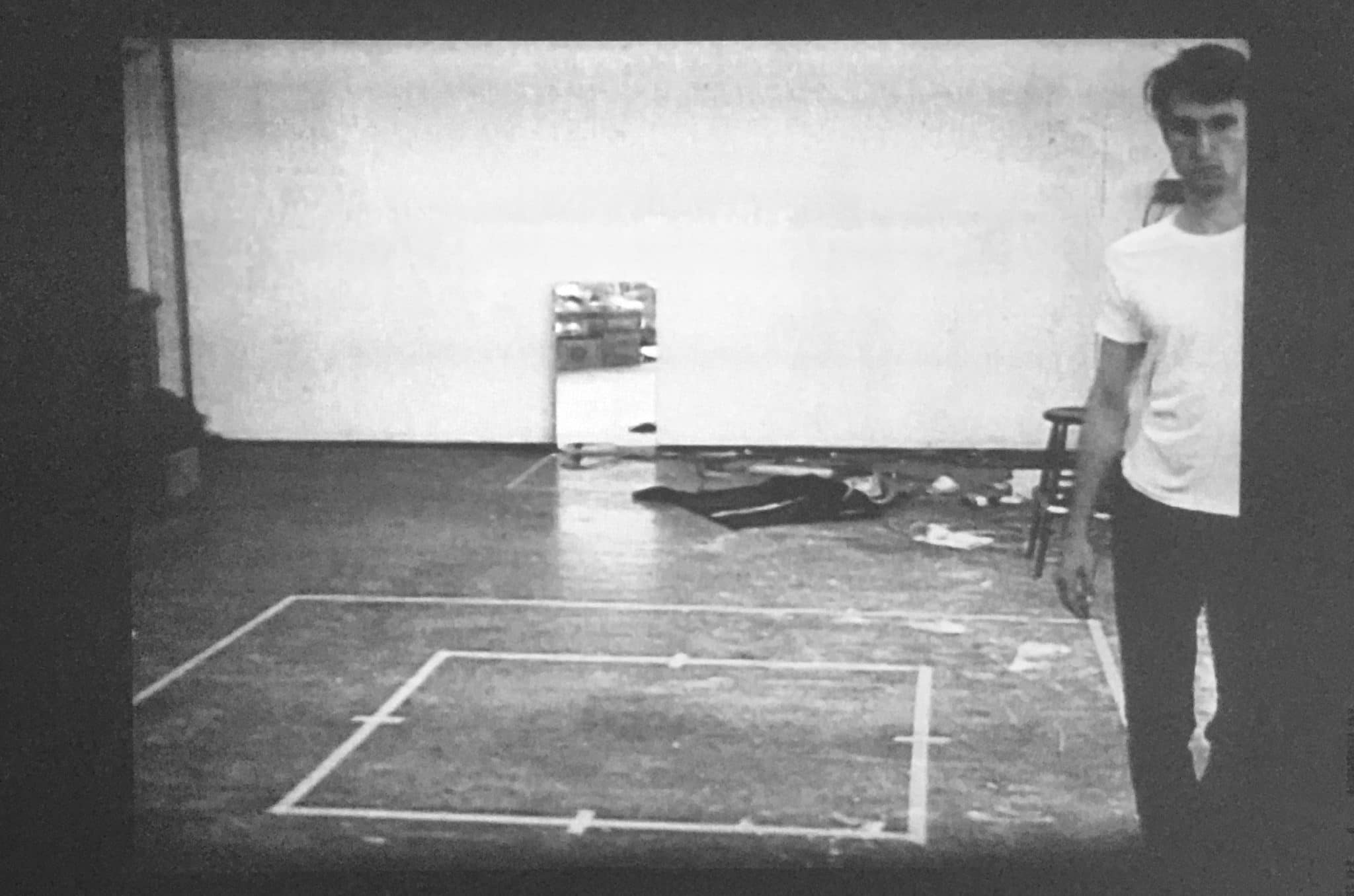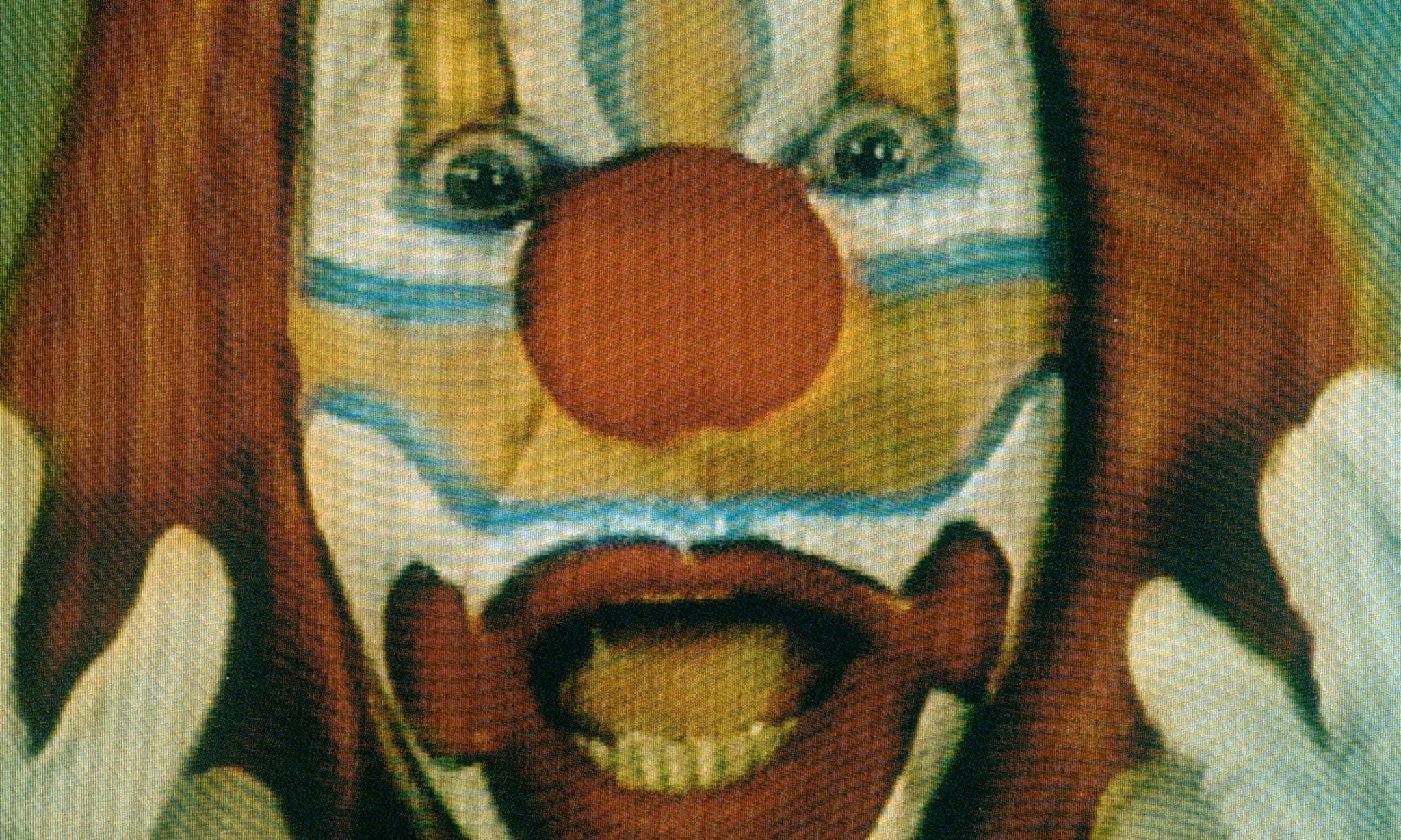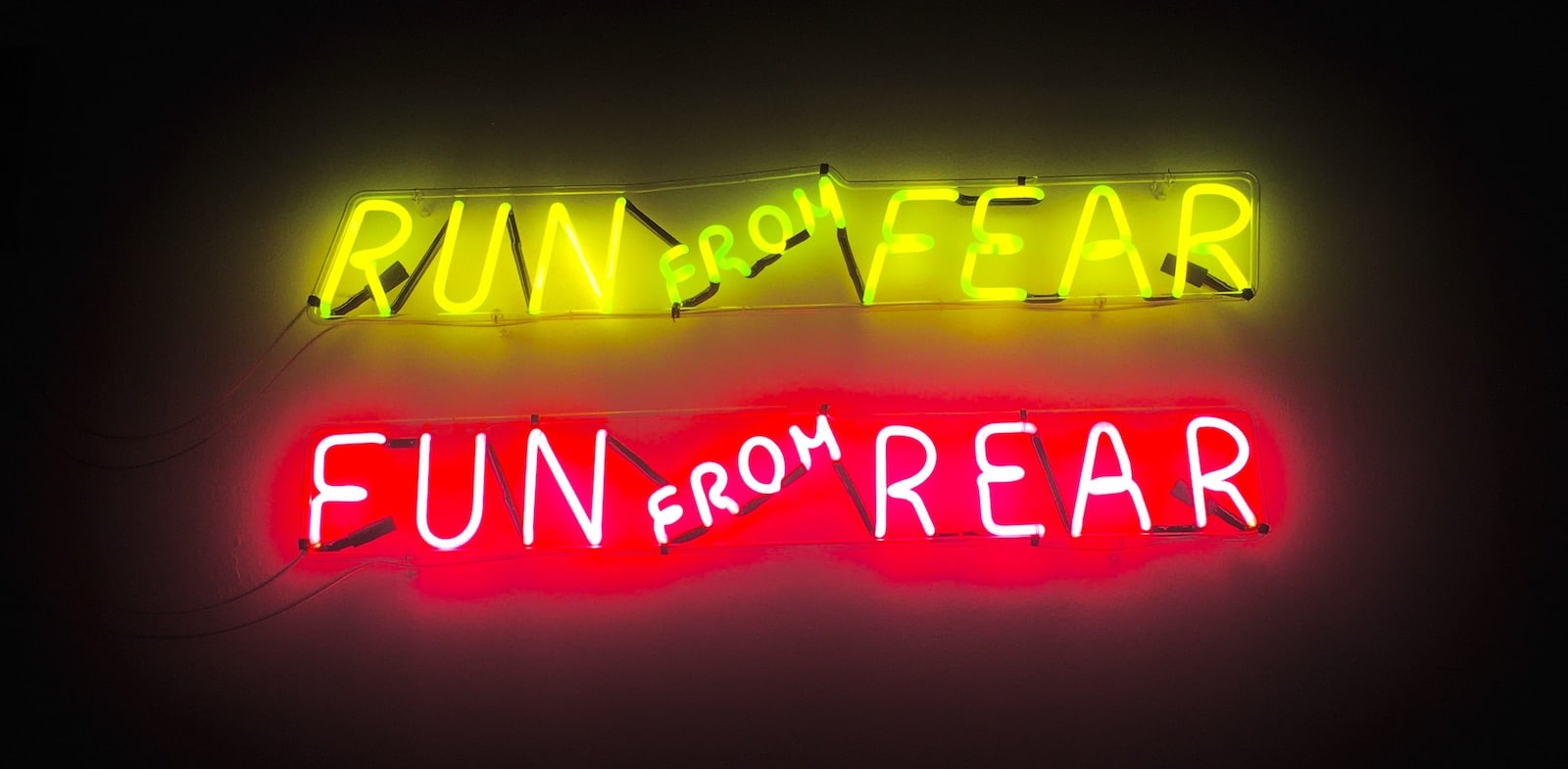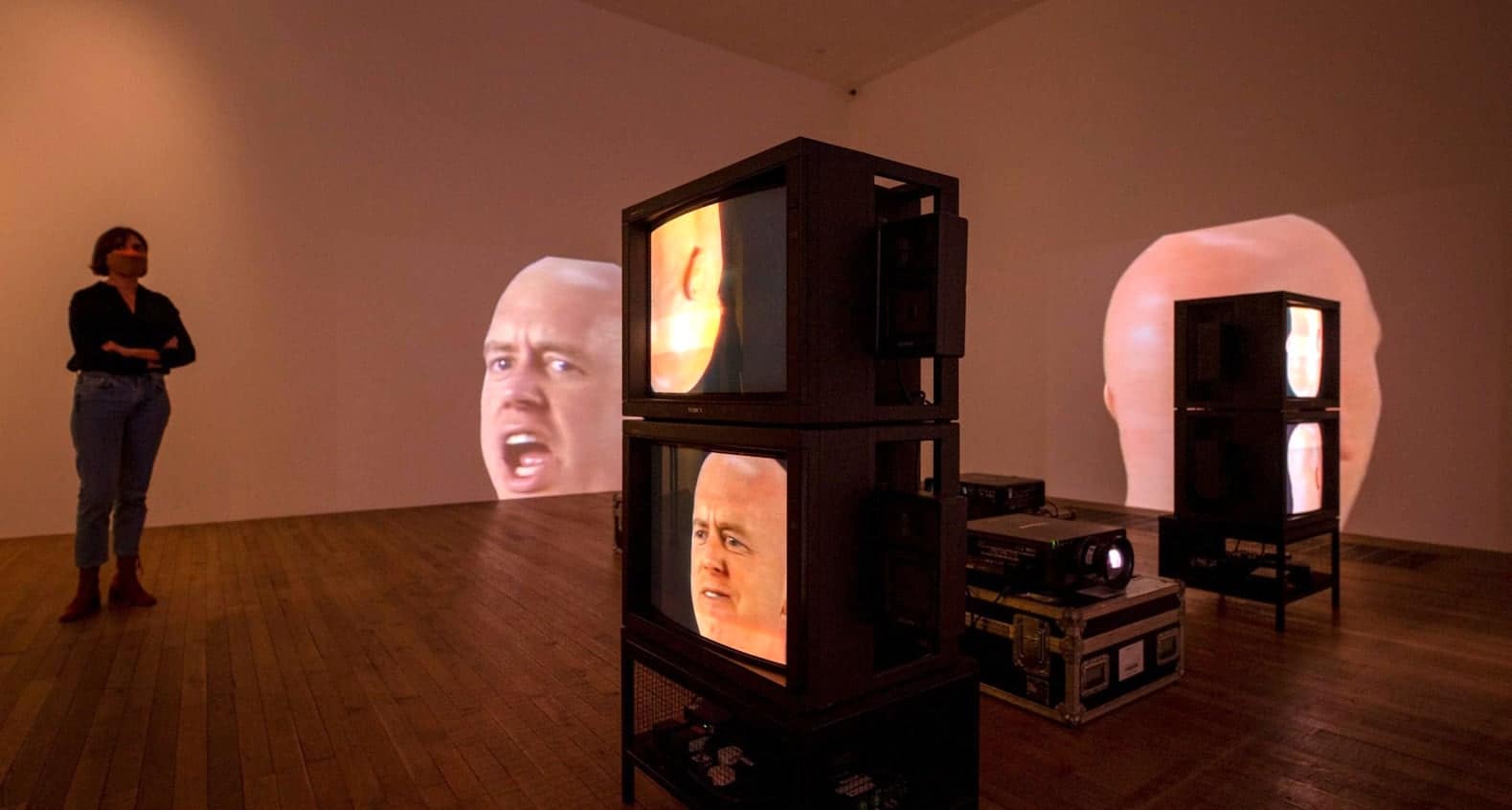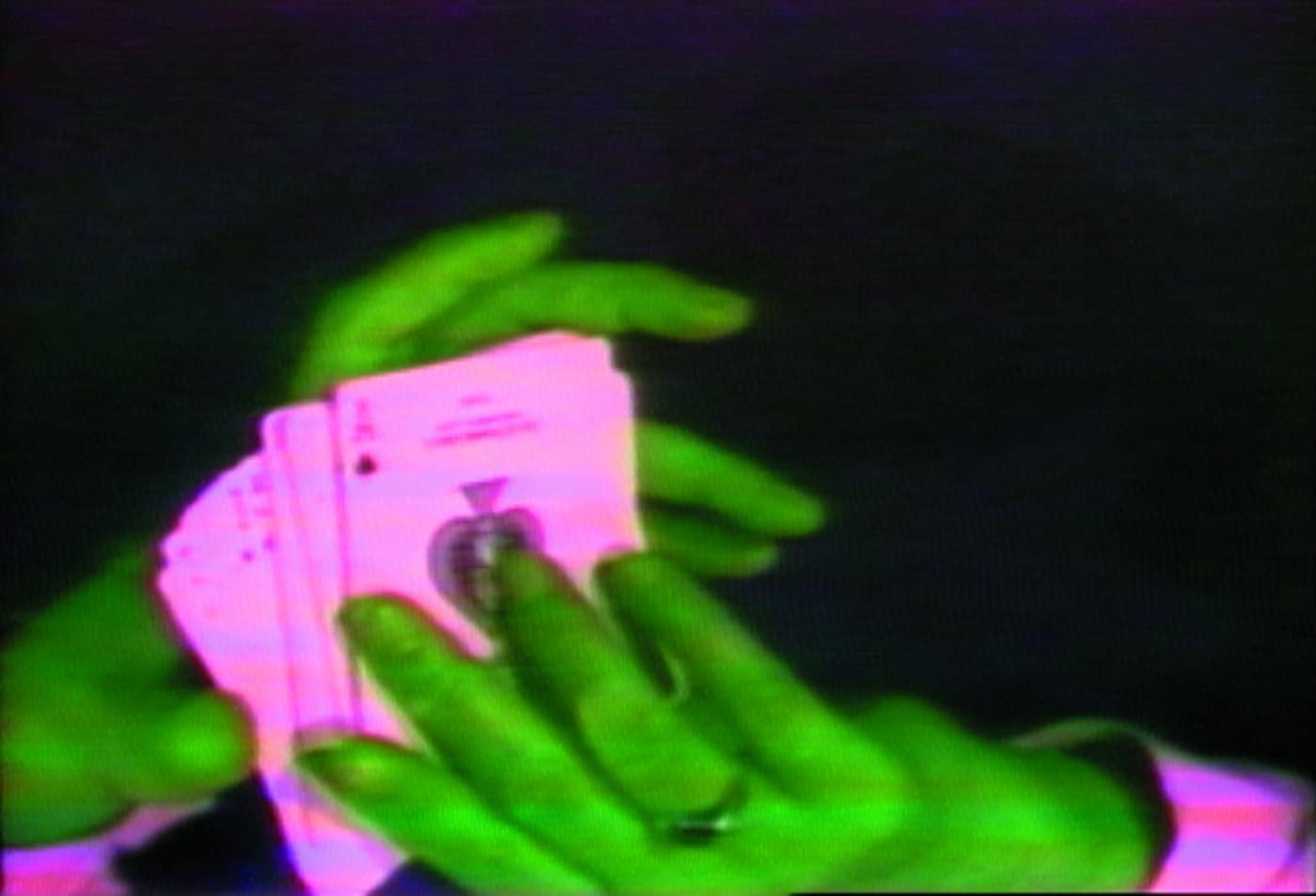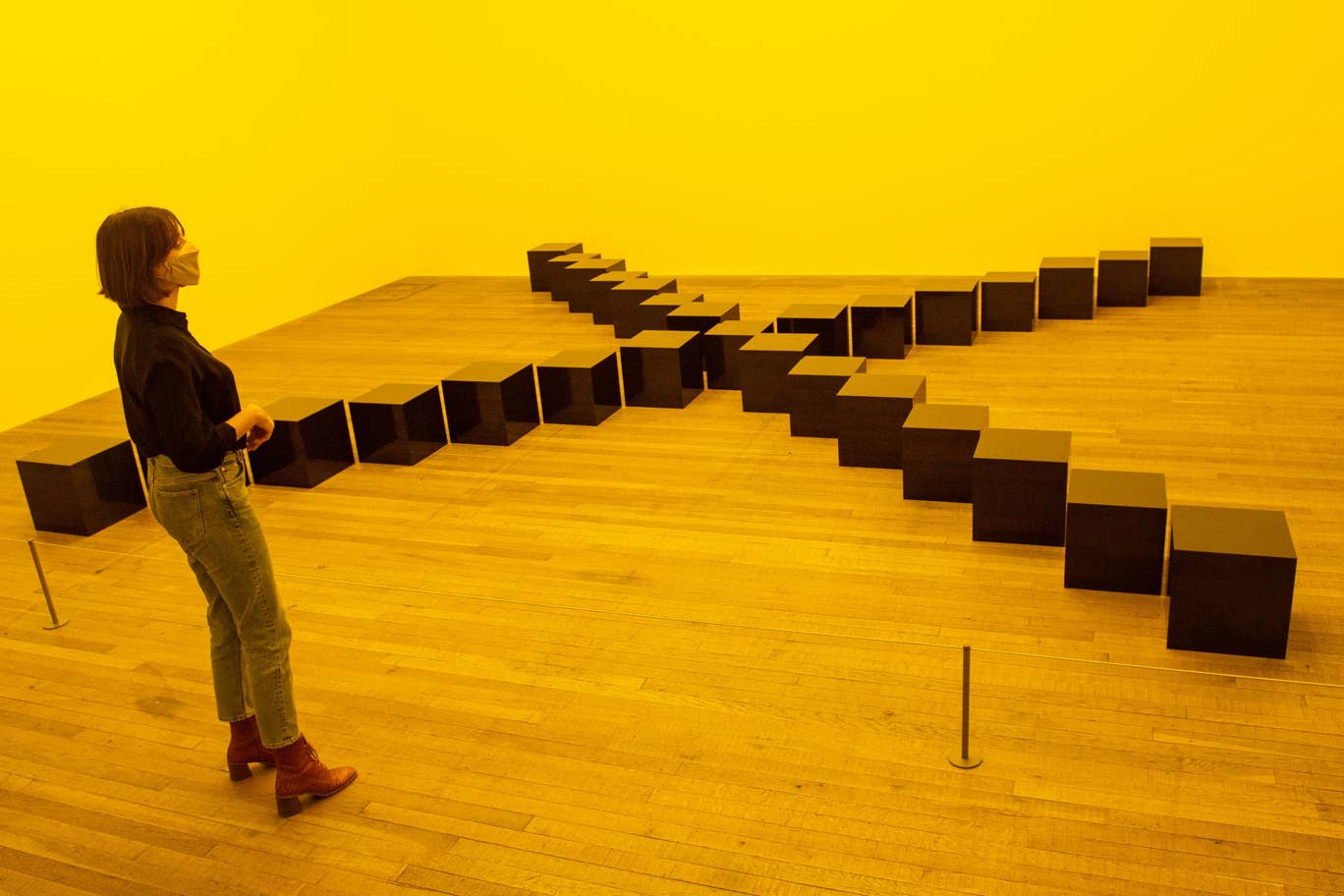Bruce Nauman’s video Washing Hands – Normal is installed at the bottom of the escalators as you arrive in the Turbine Hall. A looped tape of hands being soaped and washed under a running tap.
Outside the entrance is the video Good Boy, Bad Boy – two actors repeating lines in incrementally increasing intensity. These are clearly new works made especially for this Covid-age exhibition. Except of course they were not, actually dating to 1996 and 1985.
Here is what the National Galleries of Scotland say of Washing Hands: ‘This video installation shows the artist washing his hands with a vigour that goes beyond a daily cleaning ritual. The energy of the gesture and the distortive effect of the double screen evoke a sinister prior event and a sense panic or fear. Here Nauman continues his ongoing investigation into human psychology and feelings of discomfort. The sense of anxiety is heightened by the echoing sound of the water draining away’.
Like many of Nauman’s works it is repetitive and obsessive. Intensely investigating life’s absurdity and mundanity this video, along with many works in the exhibition, prove to be strangely prophetic precursors to the claustrophobic times of today. What a perfect time for the Tate to stage the first major exhibition of his work in London in more than 20 years, although strangely it must of course have been planned several years ago.
Bruce Nauman is a restlessly inventive artist. His ground-breaking works using sound, film, video and neon have influenced generations of artists, some building whole careers on some of his ideas – it is not hard to spot the influence on artists like Rachel Whiteread, Antony Gormley, Marc Quinn, Tracey Emin and others. Since the late 1960s he has continually tested what an artwork can be using close observation, repetition, humour and absurdity.
In this major Tate survey Nauman’s work is not arranged chronologically, but we do begin with some of his early works. We can sit down and see how long we can watch real time videos of his studio at night – the stillness only very occasionally broken by a scuttling rat. Mapping the Studio is however not really so much about this studio but about us – waiting and watching – and the absent artist.
In other early video works we watch him hold painful poses or as he bounces in to the corner of a room again and again. In others we are alone with Nauman as he is Walking in an Exaggerated Manner around the Perimeter of a Square, slowly walking backwards and forwards with comic precision; scraping tunelessly on a violin tuned to D.E.A.D.; sashaying down a claustrophobically narrow corridor with pastiche classical contrapposto posing; or pulling and pinching at his neck and face.
Dull and repetitive, this is what we might do if we were stuck at home for too long and once again Nauman’s works resonate with the current zeitgeist. Again we remind ourselves that these videos are up to 50 years old.
There are later videos, where he films clowns – but there is little fun on view. These clowns are disturbing and disturbed. In one video a clown shouts “Pete and Repeat were sitting on a fence. Pete fell off. Who was left? Repeat”. Inevitably the video repeats. Another looped film is called ‘Clown Torture’. It is a form of torture to watch.
In a nearby room a female mime artist is ordered to perform by a disembodied male voice. The mime’s costume and makeup make her seem less a performer than victim in a claustrophobic theatre of cruelty.
There are plenty of his trademark neon sculptures. Some are witty wordplays like one that says ‘run from fear, fun from rear’. Others are a neon version of the game Hangman and One Hundred Live and Die, and a wall of flashing contradictory instructions saying things like: cry and die, kiss and die, smile and live.
Nauman also wants us to join in to feel the discomfort and absurdity. Double Steel Cage Piece, closed off due to the restrictions, would normally allow access into the narrow gap between one cage held within another. With too little room to turn we need to shuffle sideways, awkwardly trapped in a meaningless cage – we fear forever.
He also videos us walking along a wall, presenting our disappearing image to us just as we turn the corner. We end up chasing our own video tail, forever going around in a fruitless, circular chase.
As we approach the last rooms Anthro/Socio, one of the most discomforting works features an actor’s multiple spinning video heads urgently shouting needily: “Feed me, help me, eat me, hurt me”. His loud cries add to the general ambient noise throughout – a disturbing Lynchian background to the exhibition: an Eraserhead style mechanical drone accompanied by disembodied shouts and moans.
This soundtrack adds to the general feeling of unease that accompanies Nauman’s work with its themes of physical and psychological duress, cruelty and humour. It is intense and yet at the same time mundane: an exploration of life’s absurdity, taken right to the limit, in what sometimes feels like an artistic endurance test.
We get a chance for some calm in a final gallery that shows a series of ultra-slow-motion films in which magicians perform tricks in extreme close up: a shuffling pack of cards, disappearing egg, a balloon dog. It is all so slow that the trick should appear evident, yet does not. It somewhat reflects the exhibition taken as a whole – an artistic sleight of hand where we are not quite sure what Nauman has done, but we are still absolutely sure that he did it.
Disturbing, intense, absurd, repetitive – and much more – this is the perfect exhibition for today’s age.
Bruce Nauman is at Tate Modern until 21 February
For our curated recommendations of Art, Culture and Travel books visit the CELLOPHANELAND* bookstore




